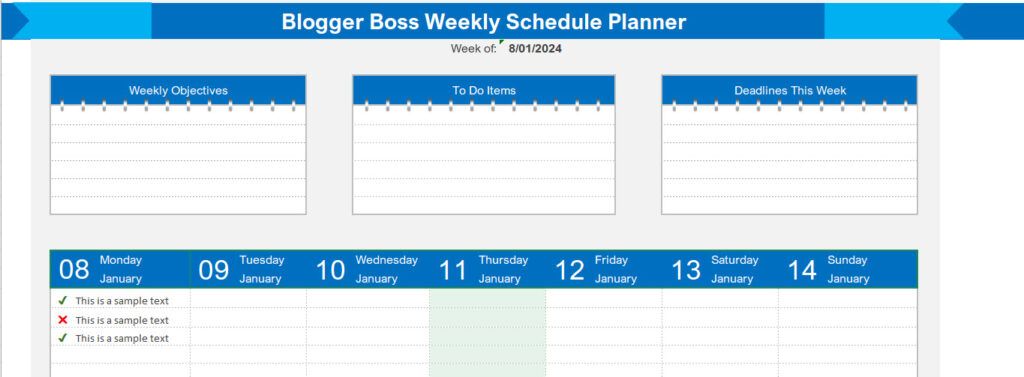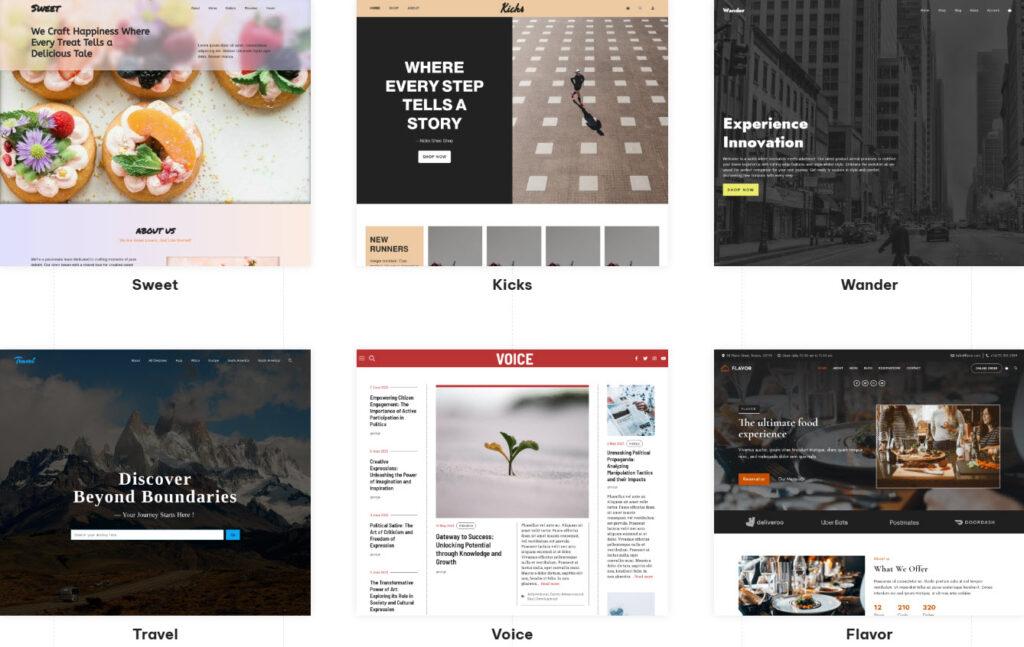Welcome to the digital age, where the secret sauce to online success is a user-friendly blog! Ever wondered, “What is a user friendly blog?” Well, fasten your seatbelts because you’re about to embark on a journey to discover this and much more!
Understanding User Friendly Blogs
Defining a User Friendly Blog
So, what is a user friendly blog? Picture it as your favorite cozy coffee shop – a place where everything just clicks and you feel completely at ease. Imagine your blog as this delightful haven where visitors seamlessly find their favorite brew of information. A user friendly blog is a digital gem that not only dazzles with its aesthetic charm but also warmly welcomes and guides visitors through its pages. Think of these key elements:
- Inviting Design: It’s the first smile that greets your audience. A clean, attractive layout with just the right splash of colors and graphics.
- Effortless Navigation: Like well-labeled aisles in a store, it makes finding what you need a breeze.
- Engaging Content: Each post should be like a well-brewed cup of coffee – rich, satisfying, and leaving your readers craving more.
In essence, when you ponder, “What is a user friendly blog?” think of a place where beauty meets functionality, making every visit a delightful experience.
related article – beginners blueprint: how to start writing for a blog with ease
Hey there, future blogging superstar! Welcome to your first step towards becoming a blogging sensation. Today, we’re diving into the exciting world of blogging – from zero to hero. So, if you’ve ever wondered how to start writing for a blog… Read More>>

Key Characteristics of User-Friendly Blogs
What makes a blog not just good but great? What is a user friendly blog? It’s one that masters the art of being effortlessly navigable, visually adaptable, and lightning-fast. Let’s break it down:
- Easy Navigation: Your blog should be a treasure trove of information, with a map that leads straight to the jewels. Clear menus, intuitive layouts, and handy search functions are like friendly guides helping your readers find the hidden treasures – your content.
- Responsive Design: In a world where everyone’s glued to screens of all sizes, your blog needs to be the fashion-forward chameleon that looks stunning on every device. Whether it’s a sleek smartphone or a desktop behemoth, your blog’s design should fluidly adapt, ensuring a seamless and engaging experience.
- Fast Loading Times: In the fast-paced online world, speed is king. A user-friendly blog zips open like a sports car, not a snail. Optimizing images, minimizing code, and using speed-enhancing plugins can make your blog as swift as a cheetah, keeping visitors engaged and not yawning.
Master these elements, and you’re on your way to creating a blog that’s not just user-friendly, but utterly irresistible!
Step 1: Planning Your Blog Structure
What is a User Friendly Blog: Laying the Foundation
Creating a user friendly blog starts with a rock-solid foundation. Here’s how to build it:
- Defining Your Target Audience: Who’s going to read your blog? Identifying your audience is like finding your North Star. Are they tech-savvy millennials, always on the latest trend? Or perhaps busy moms juggling kids and careers, looking for quick, practical tips? Understanding their interests, challenges, and online habits will guide your content, design, and strategy. It’s about making your blog a go-to destination for your specific crowd.
- Choosing the Right Platform: Picking the platform for your blog is like choosing your superhero suit – each comes with its own set of superpowers. WordPress offers flexibility and a vast array of plugins, perfect for those who want to customize every aspect. Blogger, on the other hand, is user-friendly, great for beginners diving into the blogging world. Consider factors like ease of use, customization options, and scalability. Your platform should empower your blog, making the journey from concept to creation as smooth as silk.
Building a user-friendly blog starts with these foundational steps. Nail them, and you’re well on your way to blogging stardom!

Step 2: Designing for User Experience
Creating an Engaging Interface
In the quest to define what is a user friendly blog, the magic lies in crafting an interface that’s not just functional but also visually enchanting. Here’s how to do it:
- Visual Appeal: First impressions are everything in the blogging world. Dress your blog to impress with a harmonious color scheme and captivating images. It’s like an artist’s palette, where each color and graphic sets the mood and emotion. A dash of vibrancy here, a touch of elegance there – it’s all about creating a visual feast that keeps your audience coming back for more.
- Intuitive Layout: Simplicity is the ultimate sophistication. Your blog should have a clean, clutter-free layout, making it as welcoming and easy to navigate as your own living room. Strategic placement of menus, clear headings, and a streamlined design ensure that your readers can find exactly what they’re looking for without a treasure hunt. It’s about making every click a journey of discovery, not a maze of confusion.
By focusing on these aspects, you transform your blog from just another website into a user-friendly haven that resonates with your audience.
Using a pre-generated template like the ones below can be a great starting point for beginners. You can then add your own brand colors and personality to this.
Step 3: Optimizing for Accessibility and Speed
Ensuring Wide Accessibility
In defining what is a user friendly blog, we must emphasize the importance of accessibility. It’s about creating a digital space where everyone feels welcome and can easily navigate, regardless of their abilities. Here’s how you can achieve this:
- Implementing Accessibility Features: Think of these features as extending a helping hand to every visitor. Alt texts for images aren’t just a formality; they are a window to the visual content for those using screen readers. They bring your images to life through words, ensuring no one misses out on the full experience of your blog.
- Keyboard Navigation Support: This is like laying down a smooth, well-marked path for those who navigate without a mouse. Ensuring your blog can be easily navigated with keyboard shortcuts is not just about compliance; it’s about consideration and inclusivity.
Incorporating these elements means your blog isn’t just a space on the internet. It’s a welcoming community, accessible to all, and that’s the hallmark of a truly user-friendly blog.
Speed Optimization Techniques
When pondering what is a user friendly blog, speed is a game-changer. It’s about ensuring your blog is as swift as a cheetah, not a leisurely strolling turtle. Here’s how to keep your blog in the fast lane:
- Compressing Images and Videos: Size truly does matter in the digital world. Bulky media files can be the anchor dragging down your blog’s speed. Optimize them! Compressing images and videos is like putting your blog on a diet, making it lean and mean. This doesn’t mean sacrificing quality; it’s about finding that sweet spot where visuals remain stunning yet load in the blink of an eye.
- Minimizing HTTP Requests: The mantra here is “Less is more.” Each script, each plugin, each style sheet is a request that can bog down your blog. Audit your site and trim the fat. Eliminate unnecessary scripts and plugins. Streamline your code. It’s like decluttering your digital closet, keeping only what’s essential and efficient.
Implementing these techniques ensures your blog is not just visually appealing and content-rich but also blazing fast, enhancing the overall user experience. And that, my friends, is the essence of a user friendly blog.
I find Tinify one of the best platforms for this. I am not an affiliate for Tinify but recommend you give them a try, and the best part is it’s a FREE tool!! The below image was compressed using Tinify.
Step 4: Crafting Quality Content
The Heart of Your Blog
At the heart of every user friendly blog is content that resonates and engages. It’s the core that keeps your readers coming back for more. Here’s how to ensure your content hits the mark:
- Writing Engaging and Relevant Content: Think of your blog posts as a banquet of stories and insights, each dish more appetizing than the last. Your aim is to serve a smorgasbord of captivating, relatable, and valuable articles. It’s about striking that perfect balance between being informative and entertaining, ensuring your readers are always left craving another bite of your delicious content.
- Incorporating SEO Best Practices: In the world of blogging, SEO is like your compass, guiding readers to your content through the vast digital ocean. Use keywords smartly – they are the spices that enhance your content’s flavor. But remember, too much can spoil the dish. Sprinkle them thoughtfully throughout your content to make it more discoverable, but keep it natural. Google, the all-seeing eye, prefers content that’s as organic as it is SEO-friendly.
Crafting content with these elements turns your blog into more than just a website; it becomes a destination – a user friendly blog that readers return to, time and again.
Step 5: Testing and Gathering Feedback
The Final Touch
As you near the finish line in defining what is a user friendly blog, it’s crucial to give it the final polish. This involves understanding your audience deeply and refining your blog based on their interactions. Here’s how to do it:
- Utilizing Analytics Tools: In the realm of blogging, data is akin to a crystal ball. Analytics tools are your secret weapon, allowing you to dive deep into the psyche of your visitors. They reveal the who, what, and how of your audience’s behavior. Which posts are they loving? Where do they bounce? This insight is golden, helping you tailor your content and design to fit their preferences like a glove.
- Encouraging User Feedback: Embrace feedback with open arms, whether it’s through comments, emails, or social media shoutouts. It’s the breakfast of champions, nourishing your blog’s growth. Each piece of feedback is a nugget of wisdom, guiding you on how to evolve and improve. Create channels for your readers to voice their thoughts easily – it’s like having a direct line to what makes your blog truly user friendly.
Incorporating these strategies ensures your blog is not just a static digital entity, but a dynamic, evolving space that continually enhances its user-friendliness.
FAQ Section: Understanding User-Friendly Blogs
Navigating the world of blogging can raise many questions, especially when it comes to creating a blog that’s both appealing and easy to use. To help you in this journey, we’ve compiled a list of frequently asked questions that pop up when people search for “what is a user friendly blog”. These answers aim to shed light on some of the most common queries and guide you towards making your blog a delightful experience for every visitor.
How do I Make my Blog More User-Friendly?

To make your blog more user-friendly, focus on key aspects such as intuitive navigation, responsive design, and fast loading times. Ensure your content is engaging, accessible, and clearly organized. Use visually appealing layouts and easy-to-read fonts. Regularly update your content and engage with your audience through comments or social media. Implementing SEO best practices will also help make your blog more visible and easily discoverable.
What Does it Mean to be a User-Friendly Website?

A user-friendly website means that visitors can interact with your site effortlessly and find what they need without confusion or frustration. It should load quickly, display well on various devices and browsers, and have a straightforward and intuitive navigation structure. The content should be accessible to all users, including those with disabilities. Essentially, a user-friendly website creates a positive, seamless experience that encourages visitors to return.
What Makes a Website Not User-Friendly?

A website is not user-friendly if it’s difficult to navigate, slow to load, or not optimized for different devices and screen sizes. Poorly organized content, overwhelming layouts, excessive pop-ups, and hard-to-read fonts also contribute to a negative user experience. Additionally, a lack of accessibility features for individuals with disabilities can make a website unfriendly. Avoiding these pitfalls is crucial to ensure that your website is welcoming and easy to use for all visitors.
By addressing these key questions, we hope to provide a clearer understanding of what constitutes a user-friendly blog and how you can enhance your website to meet these criteria.
What Is a User Friendly Blog Conclusion
And there you have it, folks – the secret recipe to creating a user-friendly blog that even your grandma would love. Remember, the digital world is ever-changing, so keep adapting, keep improving, and most importantly, keep blogging!
For more insights on creating impactful content, check out this fantastic resource on content strategy and marketing.
Happy blogging, and may the odds of user-friendliness be ever in your favor!
Behind every great endeavor stands a visionary, and Blogger Boss is no exception. Mark, the founder of Blogger Boss, is more than just a figurehead; he’s a mentor, a guide, and a fellow traveler on the road to blogging success. Mark’s philosophy is simple: your success is his success. With years of experience navigating the highs and lows of the blogging world, Mark brings a wealth of knowledge and a genuine passion for teaching to the table.
Through one-on-one coaching sessions, Mark offers personalized advice tailored to your blog’s unique needs and goals. Whether you’re wrestling with technical issues, seeking clarity on your content strategy, or looking for ways to monetize your passion, Mark is there, every step of the way, to ensure your journey is not just fruitful but enjoyable.




